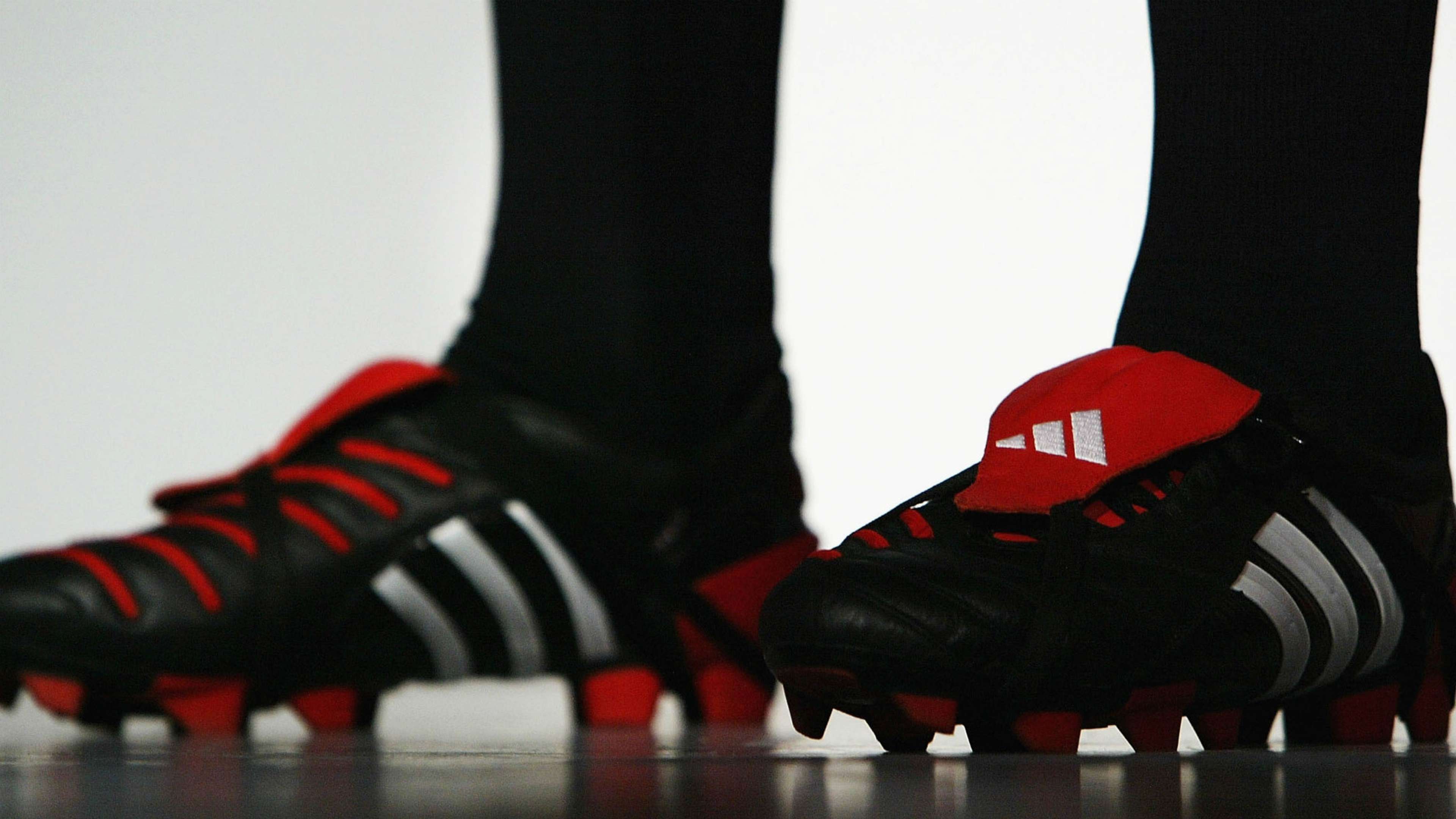There are few more iconic boots in the history of football than the Adidas Predator.
First masterminded by ex-Liverpool player Craig Johnston, the Predators achieved worldwide acclaim while being worn by the likes of David Beckham, Zinedine Zidane and Alessandro Del Piero.
While coaching children in Australia, Johnston came up with the idea of adding rubber to the traditional leather boot in a bid to make the ball easier to control.
Adidas bought the rights to the design and an iconic shoe was born.
Though it has changed greatly both in terms of technology and appearance over the years, the Predator has never moved away from its original goal of improving control and striking of the ball.
With the help of the Adidas archives, Goal has put together a brief history of the classic boot.
ADIDAS PREDATOR (1994)
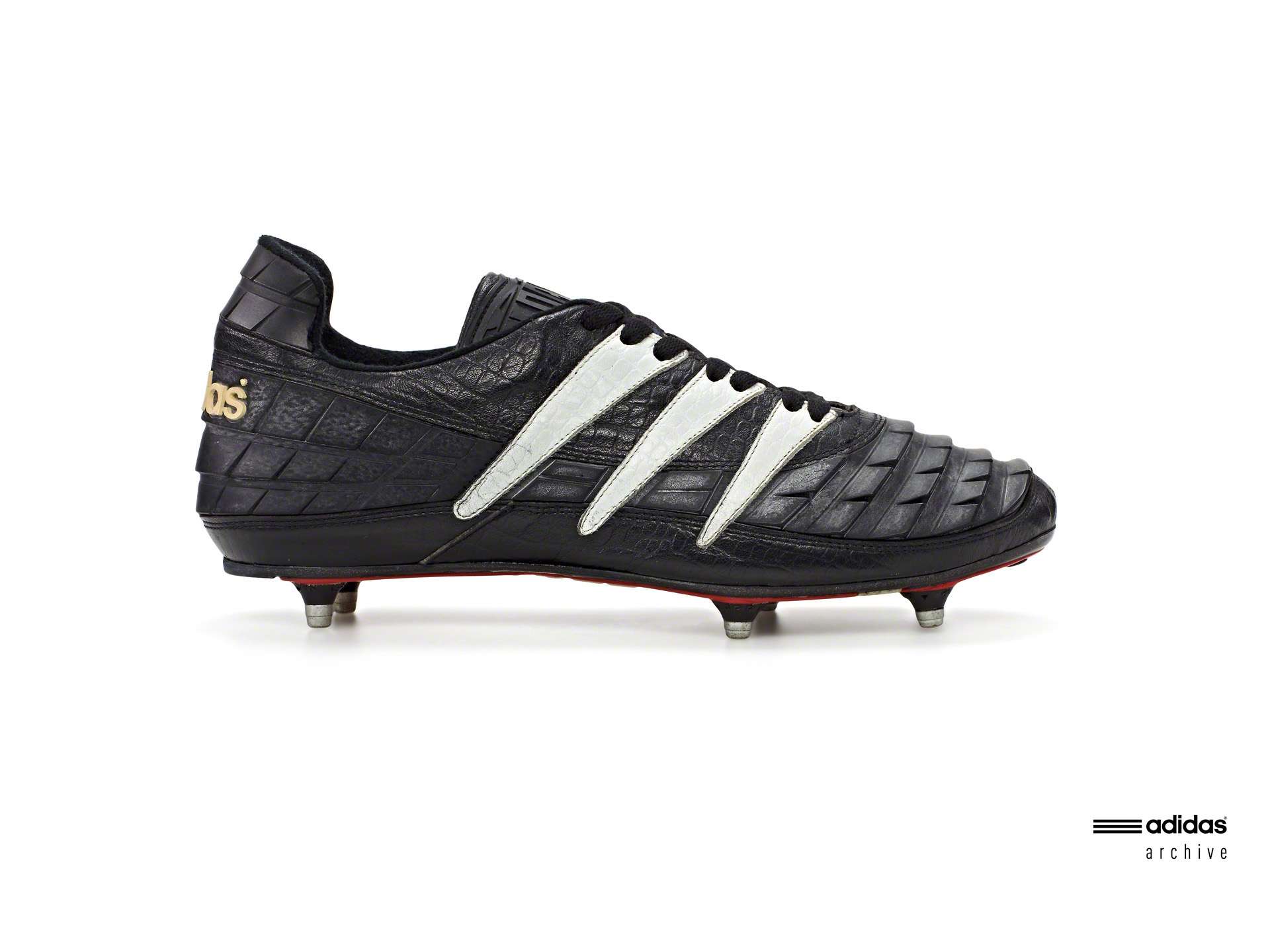
The very first Predator dates all the way back to 1994 and the early years of the Premier League.
It immediately established the black, white and red colour scheme that would come to be naturally associated with these boots and featured ridged teeth in the leather - the origin of the iconic 'strike zone' on later models.
The idea behind the teeth was to get more power and swerve on the ball, and it worked.
ADIDAS PREDATOR RAPIER (1995)
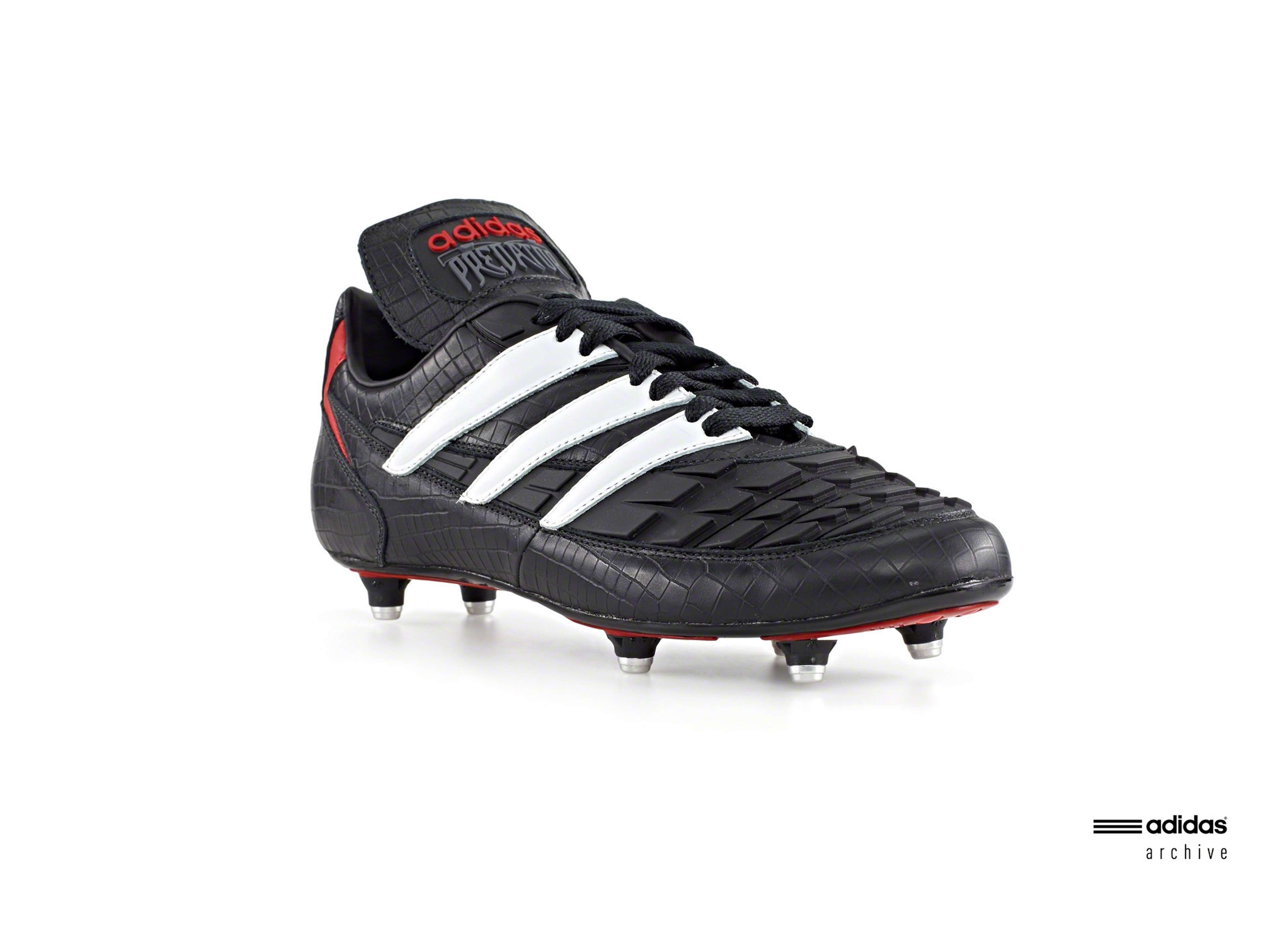 Adidas
Adidas
A year later, the second edition of the Predator - named the Rapier - was released.
This boot started to focus the teeth into the area of the boot where the ball would be struck, with smoother leather coverage down the sides of the boot as well as across the toe.
Perhaps most notable, though, is the introduction of a much larger tongue.
That represented another step towards the most famous Predator design, when it would cover the laces and be held down with a strap.
ADIDAS PREDATOR TOUCH (1996)
 Adidas
Adidas
Just two years after the original Predator had been launched, things were progressing pretty quickly.
The Predator Touch reduced the size of the laces on the exterior of the boot, meaning the fold-over tongue offered virtually complete coverage. Consequently, the striking area could be completely covered with teeth.
The rest of the boot took on a much smoother look and the three stripes were also more subtle - something that would be only temporary but reflected again in later models.
ADIDAS PREDATOR ACCELERATOR (1998)
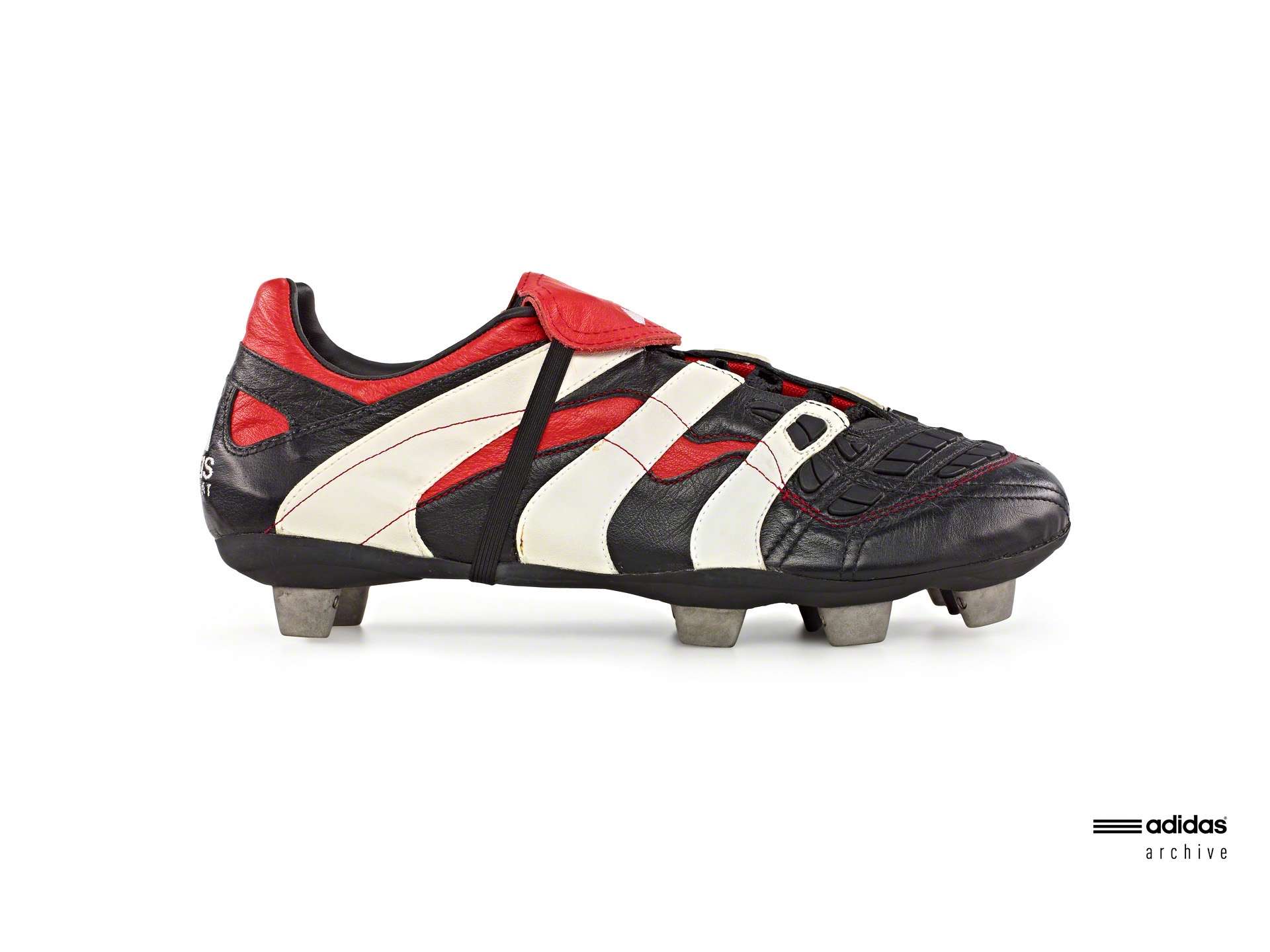 Adidas
Adidas
Big stripes made a big return in 1998, when Adidas released the first new Predator in two years for the World Cup in France.
They had been working away to make the laces even less invasive for players when striking the ball, with that section of the top of the boot running diagonally towards the outside of the foot.
That created a larger area around the instep that was pure leather. The teeth were still there but were more subtle, arranged in single strips in a way that most remember the Predators nowadays.
There was also a rubber band added to the tongue that could be hooked around the bottom of the boot to hold it down.
ADIDAS PREDATOR PRECISION (2000)
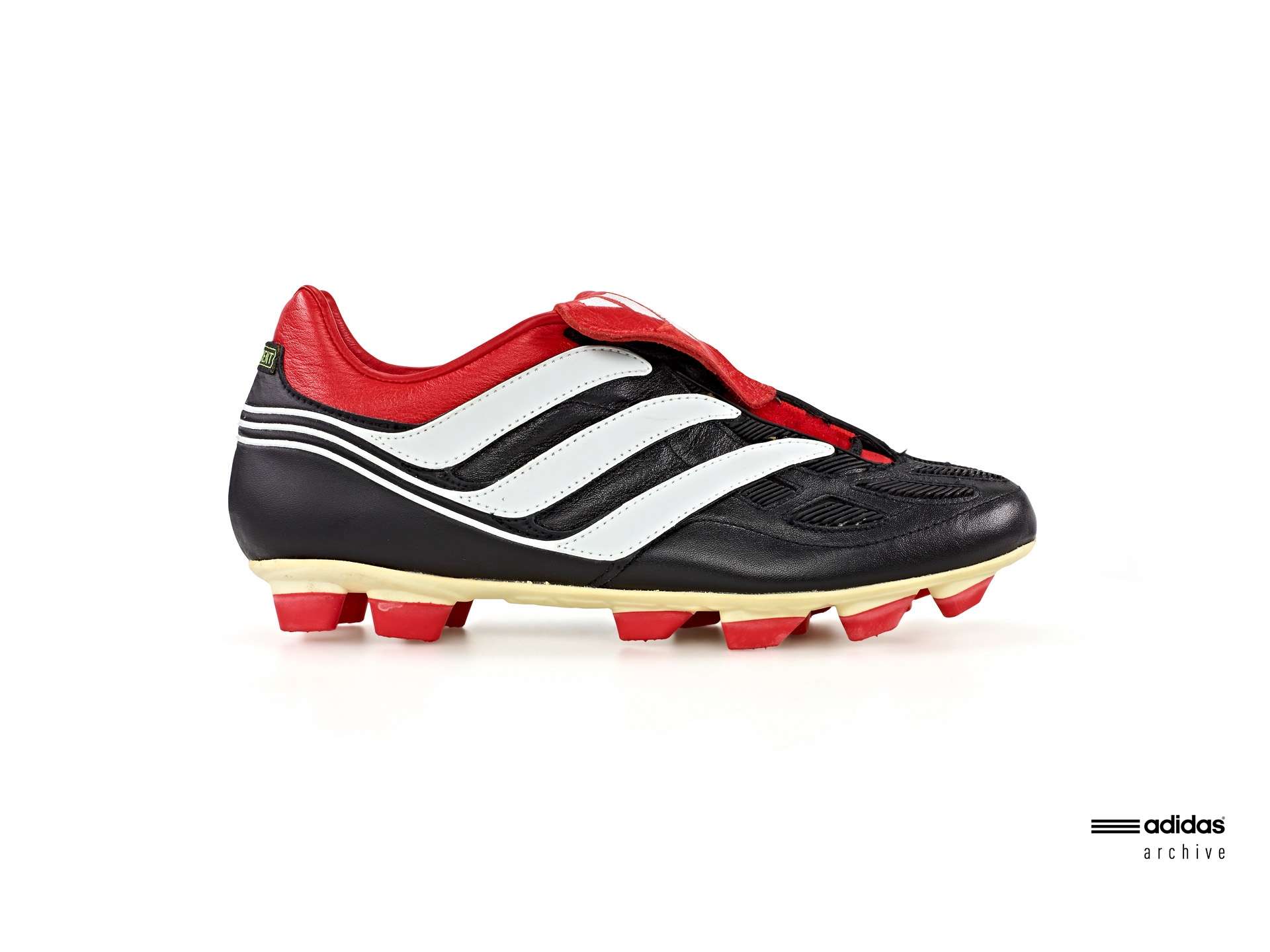 Adidas
Adidas
The Predator's glory years started with the Precision, which debuted the classic rubber striking strips around the front of the boot in enclosed, individual sections.
The tongue had velcro added to keep it in place, while studs could be changed depending on pitch and weather conditions.
Adidas re-released the Predator Precisions in a new blue-grey colour this year, bringing the boot up to date with the technology they use in their newest models.
ADIDAS PREDATOR MANIA (2002)

For many, the Predator Mania is the most iconic Adidas boot ever - and perhaps one of the most iconic boots of all-time, full stop.
They were most famously worn by David Beckham, who himself was taking the global brand power of footballers to new levels around the 2002 World Cup in South Korea and Japan.
The boots were first released in the usual black, white and red, but Beckham wore a colourway Adidas called 'champagne' and re-released earlier this year .
Adidas made the rubber strips white on the Manias, contrasting them with the black leather, and also strengthened the heel of the boot by giving it a hard coating.
ADIDAS PREDATOR PULSE (2004)
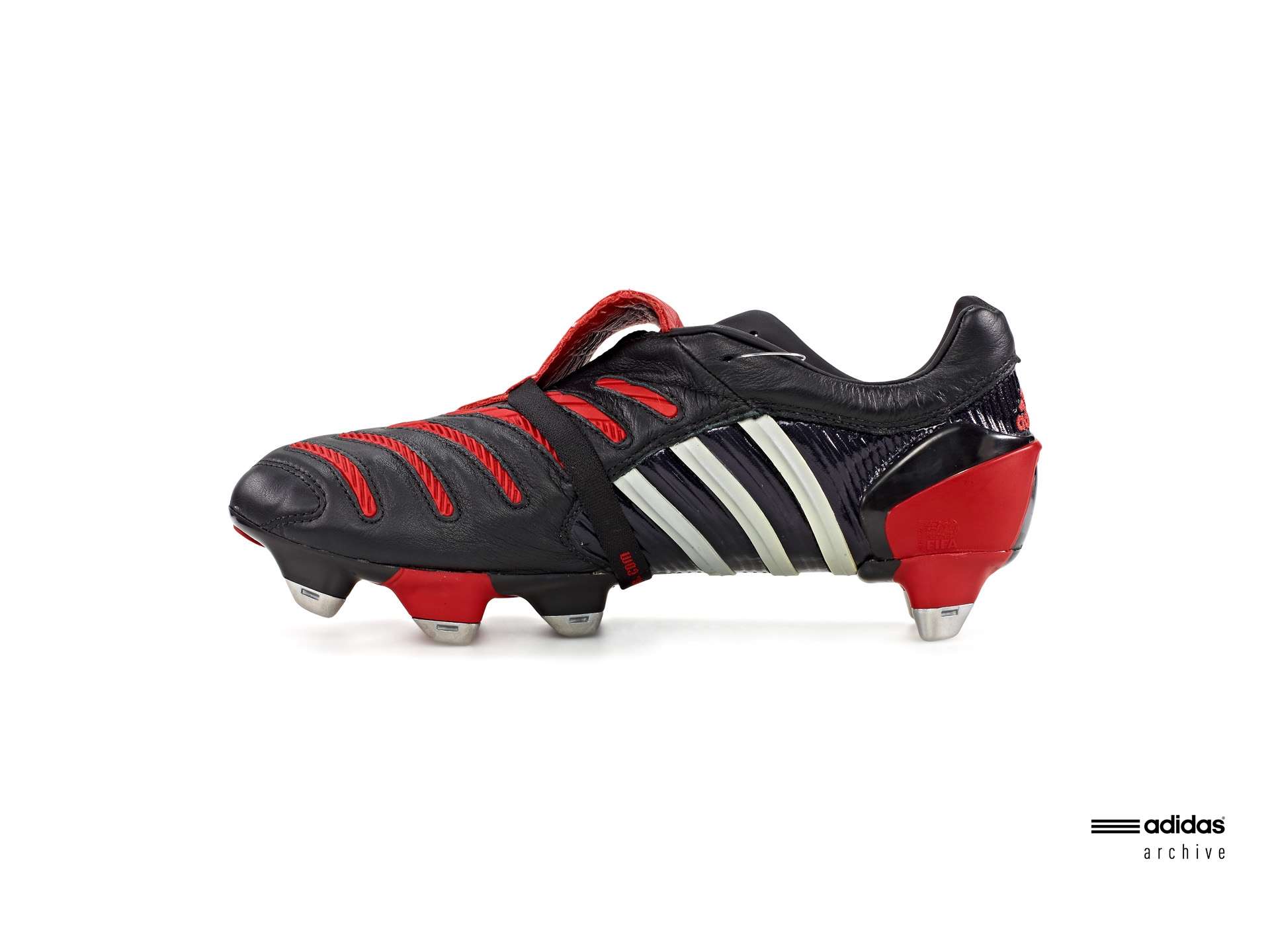 Adidas
Adidas
In 2004 came the Pulse, which saw the rubber strips altered again into much thinner strings across the top of the boot.
The material used in the thicker heel was extended further up the boot, with the Adidas three stripes running continuously underneath the foot from one side to the other.
The Pulse also introduced the 'PowerPulse' system, which was said to adjust the boot's centre of gravity closer to the area at which impact with the ball is made.
ADIDAS PREDATOR ABSOLUTE (2006)
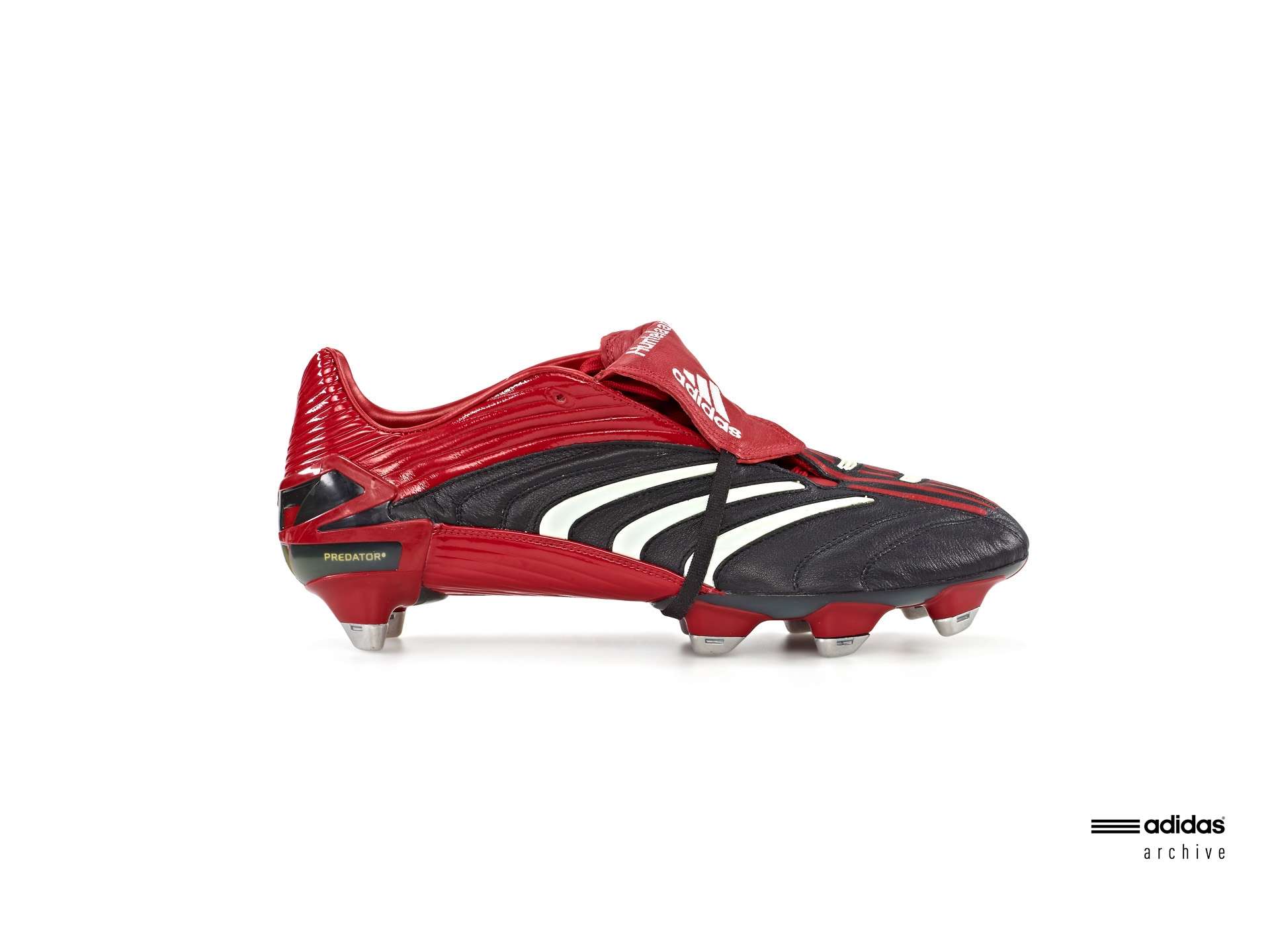
The Predator Absolute, worn widely at the 2006 World Cup, took the number of striking strips down to just three, with grooves also running vertically down the inside of the boot.
By this point Adidas were releasing a number of different colour combinations, but the classic pair saw red play a much more prominent part than it had on the Pulse.
Zinedine Zidane, meanwhile, wore a special gold pair during the 2006 World Cup final.
ADIDAS PREDATOR POWERSWERVE (2008)
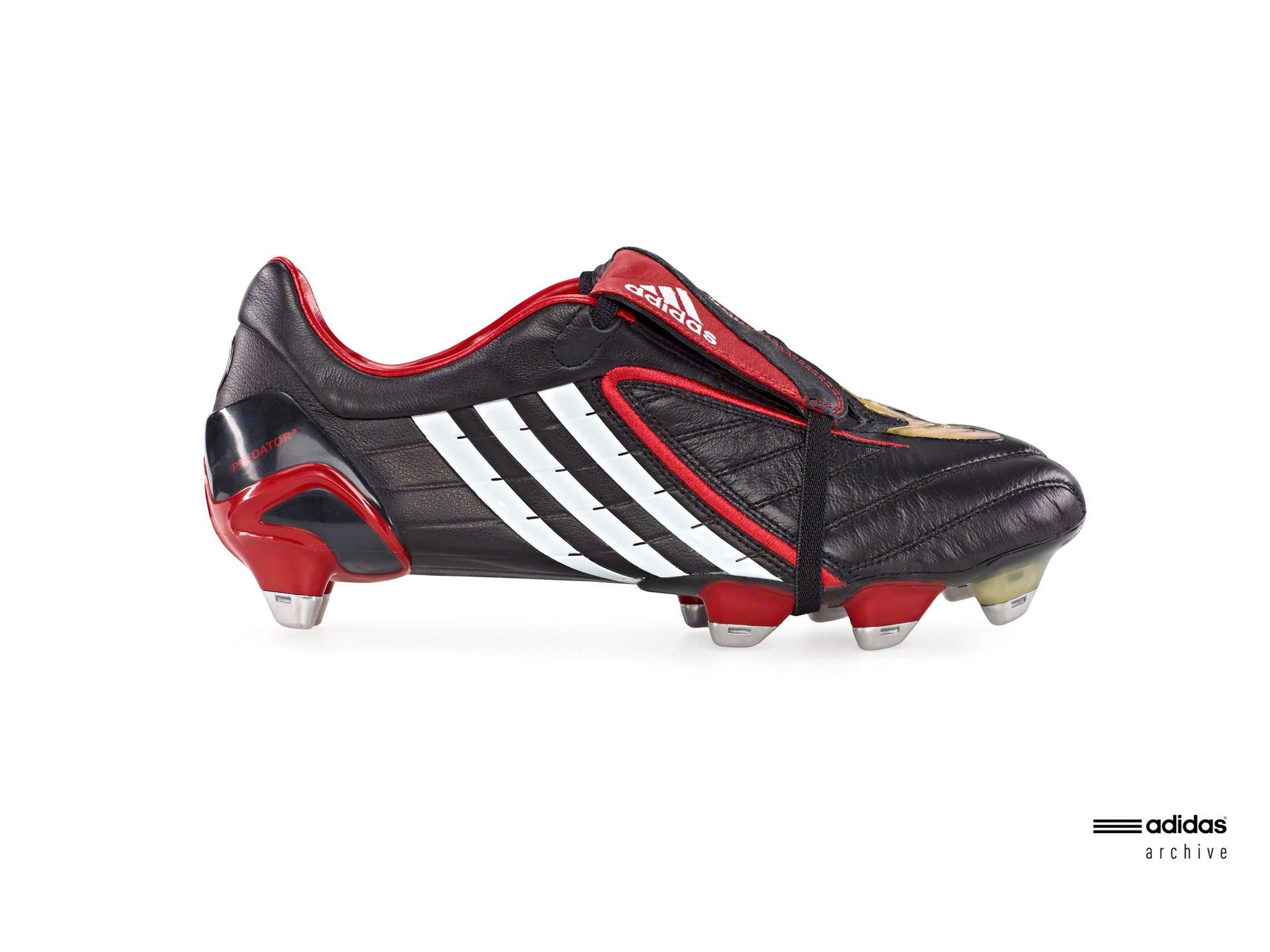
The Predator Powerswerve continued in much the same vein as the Pulse and Absolute on a design level.
The big change, though, was the introduction of 'smartfoam' in place of the rubber strips. This was said to give longer-lasting contact with the ball, increasingly the quality of the strike.
The Powerswerves were released in more different colours than any previous Predator boot.
ADIDAS PREDATOR X (2010)
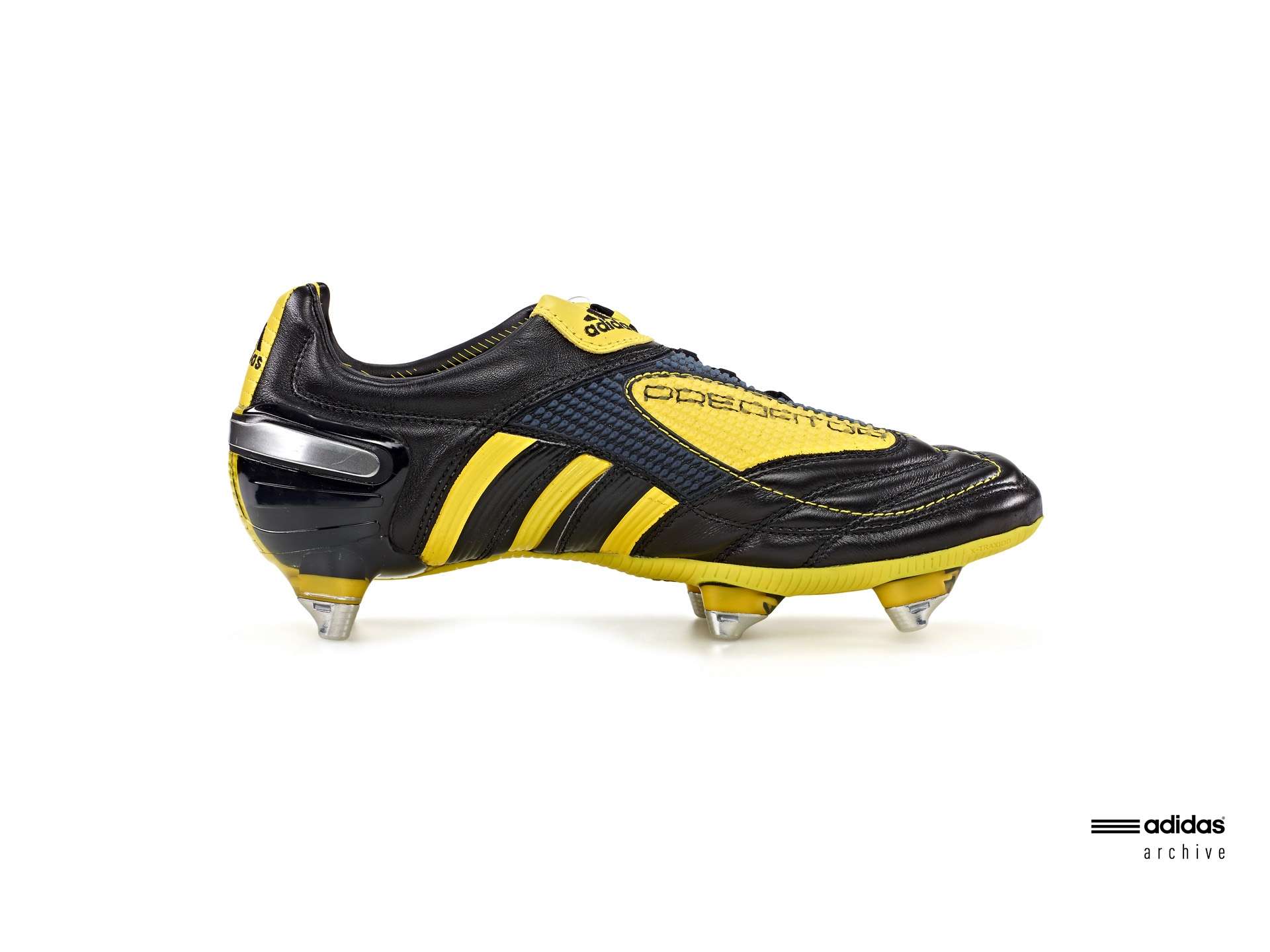
The Predator X - it was the 10th version of the boot as well as being released in 2010 - brought a couple of significant changes and the end of the 2000s Predator as we knew it.
Gone was the famous tongue, with the laces partially hidden by the way they brought the top of the boot together when tightened like a kind of seam.
And in another case of Adidas going back to the future, individual striking strips were gone in favour of a a single, larger area of foam to enhance contact.
ADIDAS PREDATOR LZ (2012)
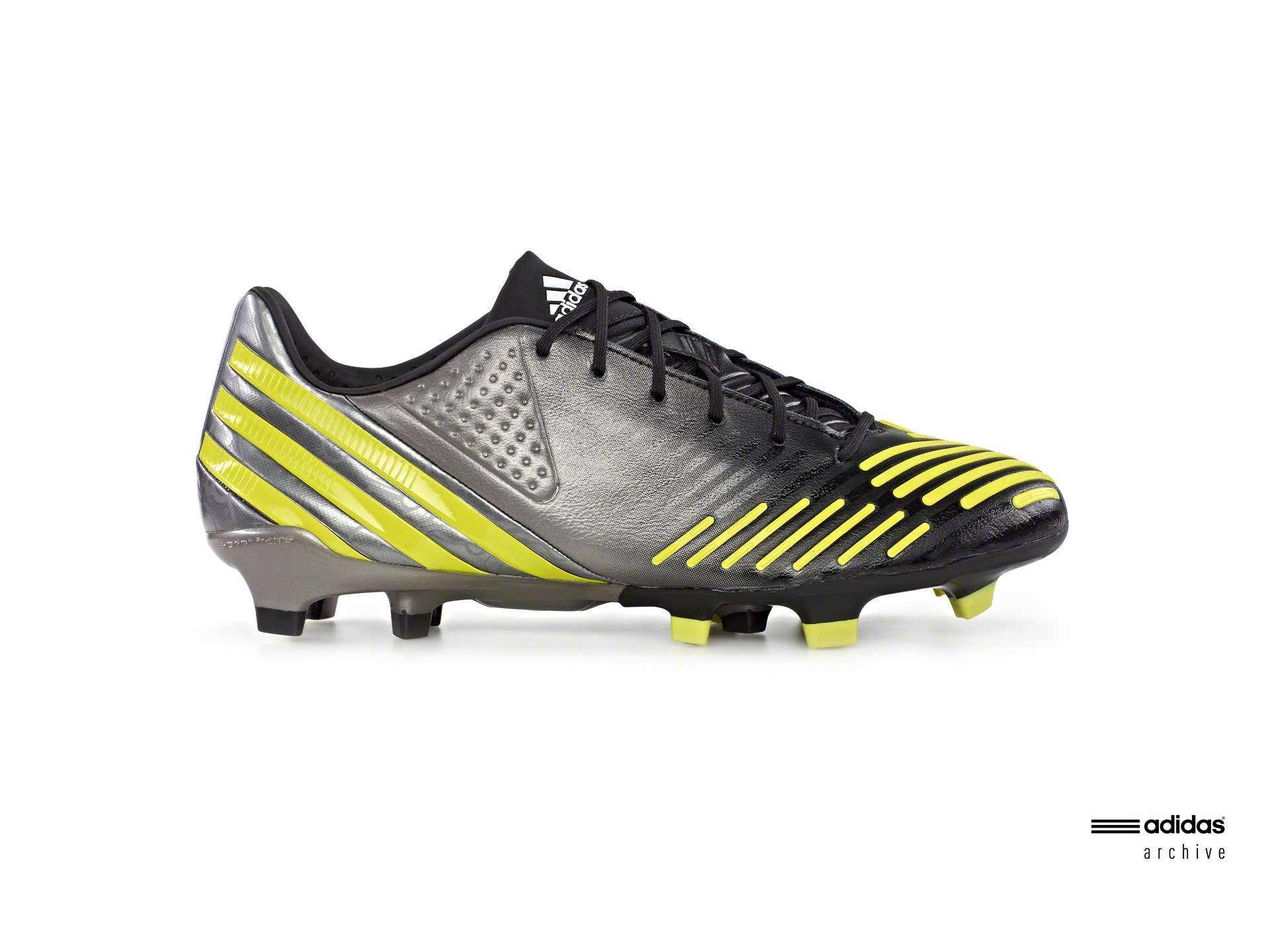 Adidas
Adidas
Moving even further away from the classic Predator design, the 2012 model put an emphasis on 'LZ' - Lethal Zones.
The idea was basically the same as had always been the foundation of the Predator; to build a boot that enhanced contact with the ball.
But rather than just focusing on striking the ball, the five Lethal Zones also catered to skills such as first touch and passing.
ADIDAS PREDATOR INSTINCT (2014)
 Adidas
Adidas
The most recent - not including re-releases - Predator is the Instinct, which was brought out in 2014 and borrowed from the Adidas F50 range.
The Instinct uses the same synthetic material as that boot - which is marketed for speed - but aims to achieve a balance between lightness and the comfort and power that has been the Predator's hallmark.
This was the last Predator to hit stores until this week's relaunch.
All photos supplied by Adidas.
